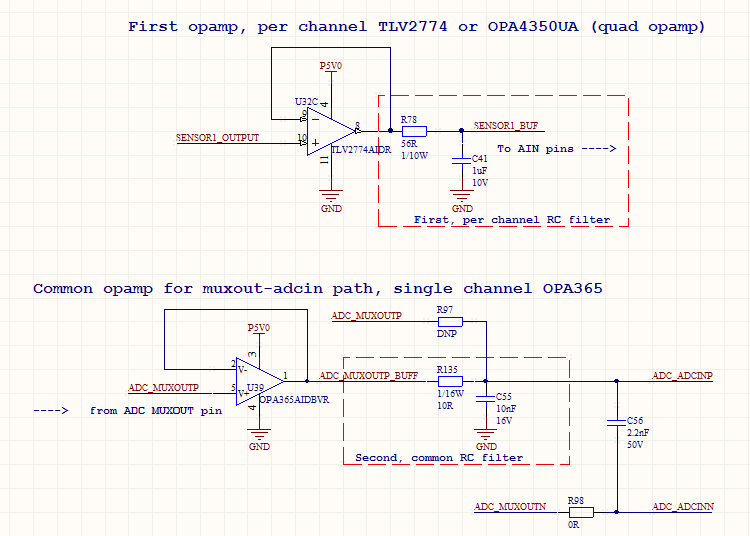We're using 10 out of the 16 channels of ADS1258 in single-ended mode in an application. (VREF=5V). 4 of these channels have to be measured very accurately, so we plan to pass them through an opamp (TLV2774 or OPA4350UA). Then, for the MUXOUT-ADCIN path, we plan to use another opamp (OPA365, which is referenced in a few places in the ADS1258 datasheet). The rest of the channels other than the four, will only use the OPA365. The circuit looks like below:
Do you see any general problems with this approach?



